…Great stories make great attractions
1954’s 20,000 Leagues film had proven that the sci-fi fantasy epics of Jules Verne could be a perfect fit for Walt Disney Productions. The very next year, they would prove themselves a picture-perfect fit for Walt Disney’s park, too.
Disney opened with Jules Verne represented among its opening day lineup. Since literally day one, Imagineers have been trying to keep those literary adventure stories part of the parks’ lineup… and for nearly half a century, they continuously hit walls. The path to the Center of the Earth passes by plenty of never-built, temporary, and replaced attractions beginning July 17, 1955…
1955 – 20,000 Leagues: The Exhibition


Location: Disneyland
Lifetime: 1955 – 1966
Status: Temporary
Given that Disneyland went from groundbreaking to opening in 366 days, some parts of the park were more… well… ready than others. Walt was famously displeased with the Tomorrowland that his park would have to settle for – mostly a land of corporate displays and rented exhibition space.
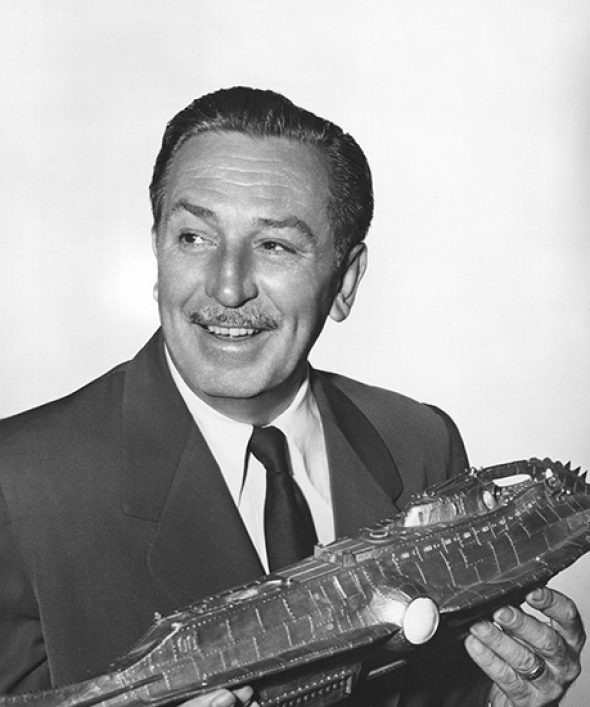
So, he had the sets from the hit 20,000 Leagues film shipped to Anaheim and installed as a walkthrough attraction in one of the main showbuildings along Tomorrowland’s entryway. (Oddly, that means 20,000 Leagues was one of the few intellectual properties present in the park on opening day, alongside Peter Pan, Snow White, and Mr. Toad!)
The 20,000 Leagues exhibit stuck around until 1966, even co-existing with Walt’s pride and joy, the Submarine Voyage that opened in Tomorrowland’s lagoon in 1959. Disneyland’s Submarine Voyage – fittingly for Tomorrowland – was a scientific expedition into the unknown in industrial gray subs, with riders taking on the role of research scientists exploring submersible technology (which, in 1959 at least, was as much the stuff of tomorrow’s headlines as space travel).
1971 – 20,000 Leagues: Submarine Voyage
Location: Magic Kingdom
Lifetime: 1971 – 1994
Status: Sunk
While designers got to work developing plans for the Magic Kingdom theme park to be the anchor of the new “Disney World” project in Florida, they began the careful process of selecting what should be duplicated from Disneyland to its new, larger, master-planned sister park. The E-Ticket Submarine Voyage would make the jump to Florida, of course, but times had changed. Even by the late 1960s, submarines were hardly in the headlines of “tomorrow.” So while the ride was a must-have, placing it in Tomorrowland would’ve been unthinkable.
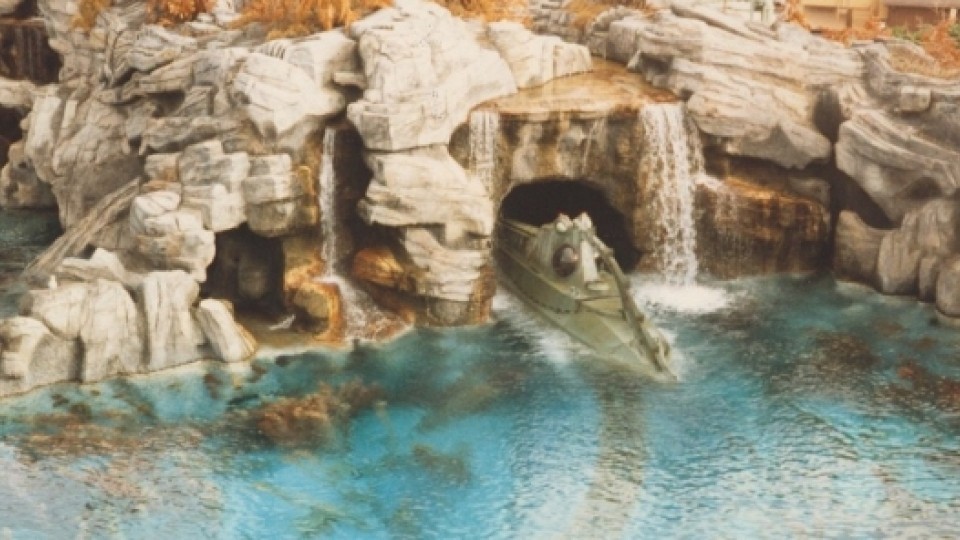
So, the project was handled to Disney Legend Claude Coats and his mentor – a new, young, fresh-out-of-school Imagineer named Tony Baxter. Brilliantly, the two redressed the Submarine ride from a scientific journey to a fantasy one, adding a few key scenes (like a run-in with a giant squid) and redesigned subs (to mimic the look of Harper Goff’s iconic Nautilus) and voila – a Fantasyland hit!
Magic Kingdom’s sub ride would go on to inspire a generation of Disney Parks fans, making its eventual demolition all the more unbearable. The ride closed in 1994 even with no plans to replace it. Its closure (or more accurately, abandonment) is regarded by many as one of the darkest moments in Disney World’s history. We chronicled the ride’s in-depth history, ride-through, and fate in its own in-depth must-read, Lost Legends: 20,000 Leagues Under the Sea.
1976 – Discovery Bay
Location: Disneyland
Status: Never built
Taking all he’d learned in his research on Jules Verne and 20,000 Leagues, Baxter returned to California after Magic Kingdom’s opening with a new project: to reinvigorate the park’s Frontierland (given that stories of the Old West and cowboys and Indians had largely faded from pop culture by the 1970s). His solution was a brand new land that continued the Frontierland story by answering the question, “What did those miners do with the gold they discovered in Big Thunder Mountain back in the 1860s?”

The answer? They continued west and founded a steampunk port city of glass spires, golden towers, geysers, zephyrs, time machines, hot air balloons, lighthouses, inventors, thinkers, philosophers, and dreamers. Here in Discovery Bay, Nemo’s Nautilus would be docked in the Rivers of America (potentially containing a simulator called Nemo’s Adventure, which would end up being the inspiration for another Lost Legend: Star Tours).
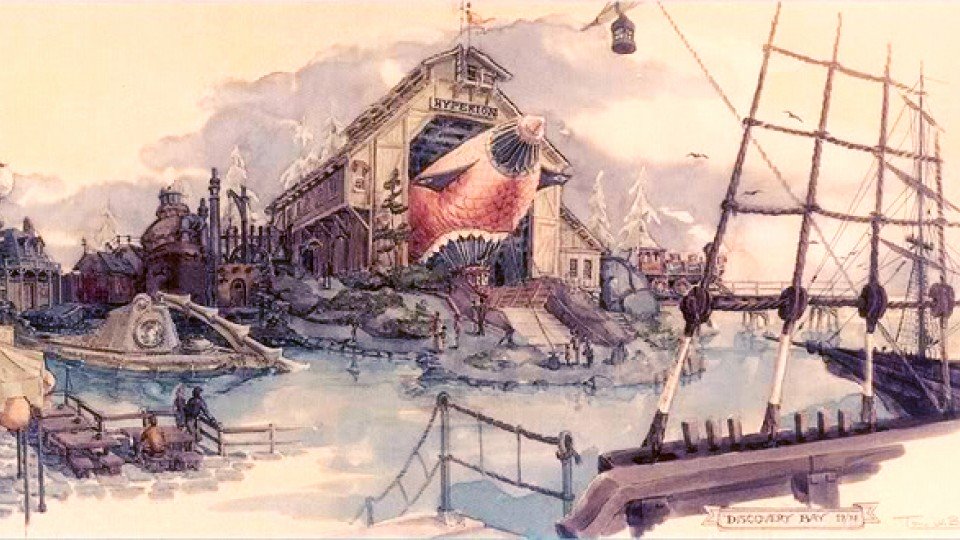
And in the land’s waterside hangar? The Hyperion, straight from Disney’s Island at the Top of the World – due in theatres in 1974. That would serve as the entrance to the land’s anchor attraction, whisking guests to the Arctic on an E-Ticket fantasy adventure.
Unfortunately, The Island at the Top of the World opened at the box office just as fantasy lost its pop culture foothold to sci-fi. The film crashed and burned, losing money and being described by critics as a “20,000 Leagues Under the Sea ripoff.” The failure of Island scaring executives away from Discovery Bay entirely. We took an unforgettable walk through the never-built land in a standalone feature, Possibilityland: Discovery Bay.
1995 – Space Mountain: De la Terre à la Lune
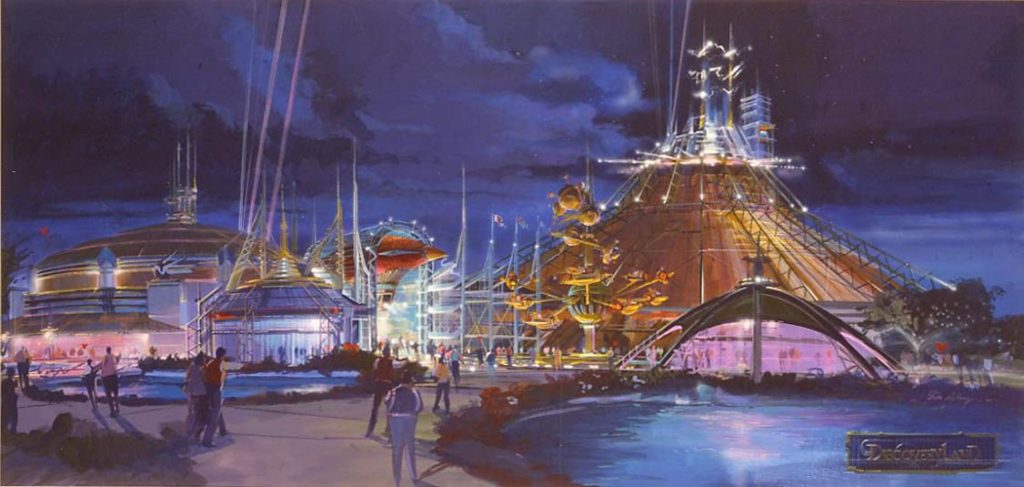
Location: Disneyland Paris
Lifetime: 1995 – 2005
Status: Replaced
While Tony Baxter may never have gotten Discovery Bay off the ground, he did get a chance to revisit the concept nearly two decades later when he was named the creative director for Disneyland Paris… not a simple task, given that the French press had launched an all-out assault against the very “American” Disney brand infiltrating their country… That left Baxter with the difficult job of adding as much “European” as possible to the Disneyland concept. That’s why so many of Disneyland Paris’ rides – even classics! – look so much different from ours.
One of his most radical ideas? Baxter knew that the sleek, white, NASA-inspired, Space Age Tomorrowland would be of no interest to Europeans, so it was replaced entirely with a new concept called Discoveryland; a gleaming, golden seaside port that represents the future, but as it was envisioned by the past – a tomorrow that H.G. Wells, Leonardo da Vinci, or Jules Verne might’ve imagined. In fact, the land’s anchor attraction was the uniquely-European Lost Legend: Le Visionarium – a trip through history with the Timekeeper at the controls and Jules Verne himself in tow!
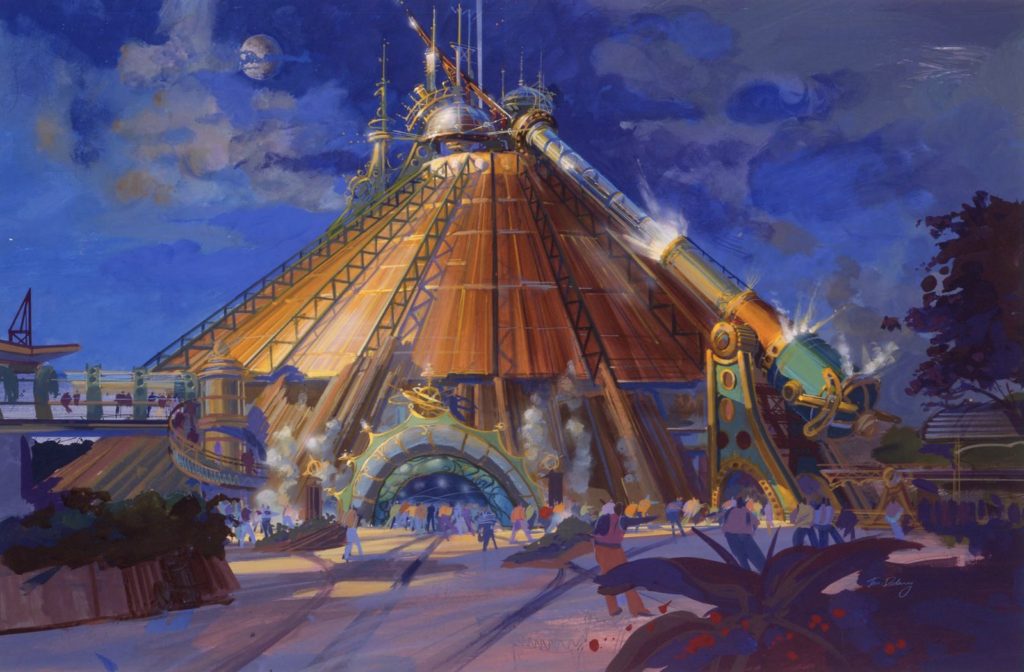
Though Discoveryland debuted with the park in 1992, its headlining E-Ticket launched three years later. Half-submerged into a bubbling lagoon alongside the parked Nautilus stood the gleaming, brass, Victorian-steampunk Space Mountain. But unlike the more scientific exploits in American Space Mountains, Paris’ was a truly fantastic journey to the moon modeled after Verne’s novel, From the Earth to the Moon.
Of course, it, too, was stripped of its fantastic theming and completely redesigned as Star Wars Hyperspace Mountain: Rebel Mission, as chronicled in the outstanding Lost Legend: Space Mountain – De la Terre à la Lune feature that’s one of our favorites.
1996 – Journey to the Center of the Earth
Location: The Disney-MGM Studios
Status: Never built
Five years after Disney’s 20,000 Leagues film, 20th Century Fox adapted another of Jules Verne’s novels into the 1959 film Journey to the Center of the Earth (even recasting Disney’s Captain Nemo, James Mason,
According to the fascinating account of revered Disney historian Jim Hill, by the mid-1990s Disney-MGM Studios in Walt Disney World was growing stale. The miniscule movie park was only just beginning to grow past its unfortunate “half day park” label (thanks to the 1994 opening of the Twilight Zone Tower of Terror), but one element of the park that was suffering badly was its would-be hit: the Declassified Disaster: The Backlot Studio Tour.
The tram-led tour through the park’s real production facilities was becoming less and less spectacular as fewer and fewer productions used the Florida studio. Imagineers were working on ideas for supercharging the Studio Tour with more staged encounters and special effects demonstrations (like Catastophe Canyon) when rumblings of a Journey to the Center of the Earth film in production caught their eyes.
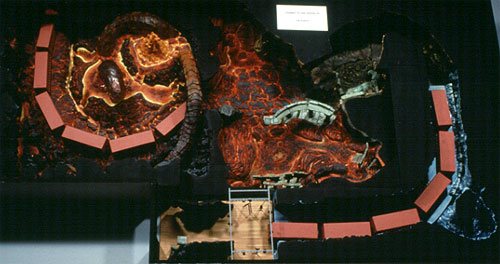
Imagineers – including Scott Sinclair – rallied behind the concept of a film themed to the Jules Verne novel and crafted an idea for a new stop on the Backlot Tram Tour. The studio trams would’ve entered into a studio soundstage that quickly gave way to a frigid subterranean chamber of icy stalagtites and endless caverns.
Around the corner, the tram would’ve driven through a fiery, sweltering underground chamber where roiling pits of glowing magma would support the sinking ruins of an ancient Atlantean city… a beautiful, hypnotic sight until guests passed under an odd, rock-like arch of undulating flattened plates…
Driving against the glowing, molten surface of the Earth’s core, the trams would’ve stalled out just as a forty foot tall subterranean worm would surface from beneath the magma, hissing and recoiling as if to strike!
Of course, this trip to the planet’s core didn’t come to pass. Michael Eisner wasn’t pleased with the script optioned for the Journey to the Center of the Earth movie, so Disney never made it. That also meant that the tie-in Backlot Tram Tour scene was dead in the water… another failed Extraordinary Voyage.
Hopeless?
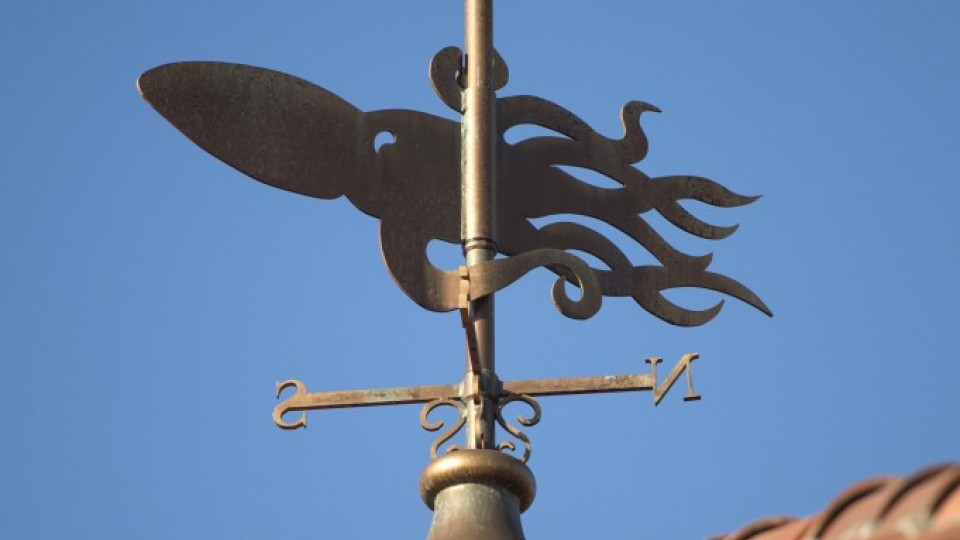
20,000 Leagues at Magic Kingdom? Sunk.
Discovery Bay? Cancelled.
Space Mountain: De la Terre à la Lune? Grounded.
The Backlot Tram Tour’s detour to the Center of the Earth? Canned.
Time and time again for the last sixty years, Imagineers watched as their attempts to include the stylized, literary, extraordinary voyages of Jules Verne fell to the wrecking ball… or more often, to a more profitable intellectual property. Today, it feels as if no Disney Parks project will be greenlit unless it’s backed by a blockbuster movie… and today, that means superheroes, Star Wars, princesses, or Pixar.
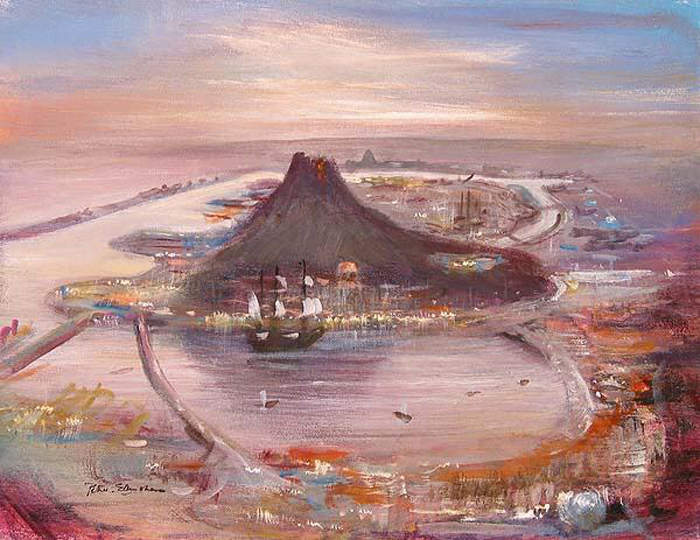
There appears to be just one exception… one resort that’s shielded from the whims of the Walt Disney Company and determined to bring original stories to life… And that’s exactly where Jules Verne’s greatest novel came to life in what may be Disney’s best ride ever. Read on…



